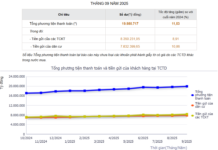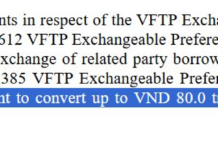A stealthy resurgence is underway, as individual miners and corporations capitalize on affordable electricity and the proliferation of data centers in energy-rich provinces, notably Xinjiang.
Prior to the ban, China dominated global cryptocurrency mining. However, in 2021, Beijing imposed a blanket ban on crypto trading and mining, citing concerns over financial stability and energy conservation. This forced many businesses and miners to cease operations or relocate to North America or Central Asia.
After China’s share of global Bitcoin mining plummeted to zero due to the ban, by late October, the country unexpectedly reclaimed the third position with a 14% market share, according to Hashrate Index, a Bitcoin mining tracker.
Bitcoin’s recovery this year, coupled with surplus energy in certain regions, has fueled a clandestine revival of mining activities. A private miner in Xinjiang revealed that numerous new projects are underway, driven by the principle, “Where there’s cheap electricity, there’s Bitcoin mining.”

Bitcoin mining is quietly resurging in China, despite the government’s comprehensive ban four years ago.
This resurgence coincides with Bitcoin’s peak in October, buoyed by defensive sentiment against the USD and crypto-friendly policies under U.S. President Donald Trump. Despite a 33% drop from its peak, mining profitability remains attractive.
Analysts view the industry’s quiet recovery as a strong indicator that certain Chinese regions are prioritizing economic benefits over policy rigidity.
Patrick Gruhn, CEO of Perpetuals.com, remarked: “This could be one of the most significant signals the crypto market has seen in years.”
Notably, Bitcoin mining rig sales in China reflect this trend. Canaan Inc., the world’s second-largest rig manufacturer, generated 30.3% of its revenue in China last year, a sharp increase from 2.8% in 2022 post-ban. Insider sources indicate this figure rose to over 50% in Q2 this year.
While Canaan did not confirm revenue breakdown details, it acknowledged declining U.S. sales due to tariffs, contrasted by China’s market recovery driven by rising Bitcoin prices and a softer stance on digital assets. The company affirmed compliance with Chinese laws in its R&D, manufacturing, and sales, but declined to comment on Bitcoin mining policies.
Meanwhile, signs of policy softening from Beijing are emerging. Hong Kong’s stablecoin regulations took effect in August, positioning the city to compete directly with the U.S. in regulated crypto markets.
China is also considering the use of RMB-pegged stablecoins to enhance the yuan’s global influence. Experts suggest that while China may not publicly ease policies, a shift in approach is becoming evident.
CryptoQuant estimates that 15-20% of global Bitcoin mining capacity remains active in China, despite the official ban.
Liu Honglin, founder of Man Kun Law Firm, noted the challenge of eradicating a highly profitable industry. He predicts gradual relaxation of anti-mining regulations, as “it’s impossible to completely suppress a profitable economic activity.”
The question remains: Is China preparing for a global market share reclaim in the crypto industry, or is it allowing the market to navigate policy gray areas?




































